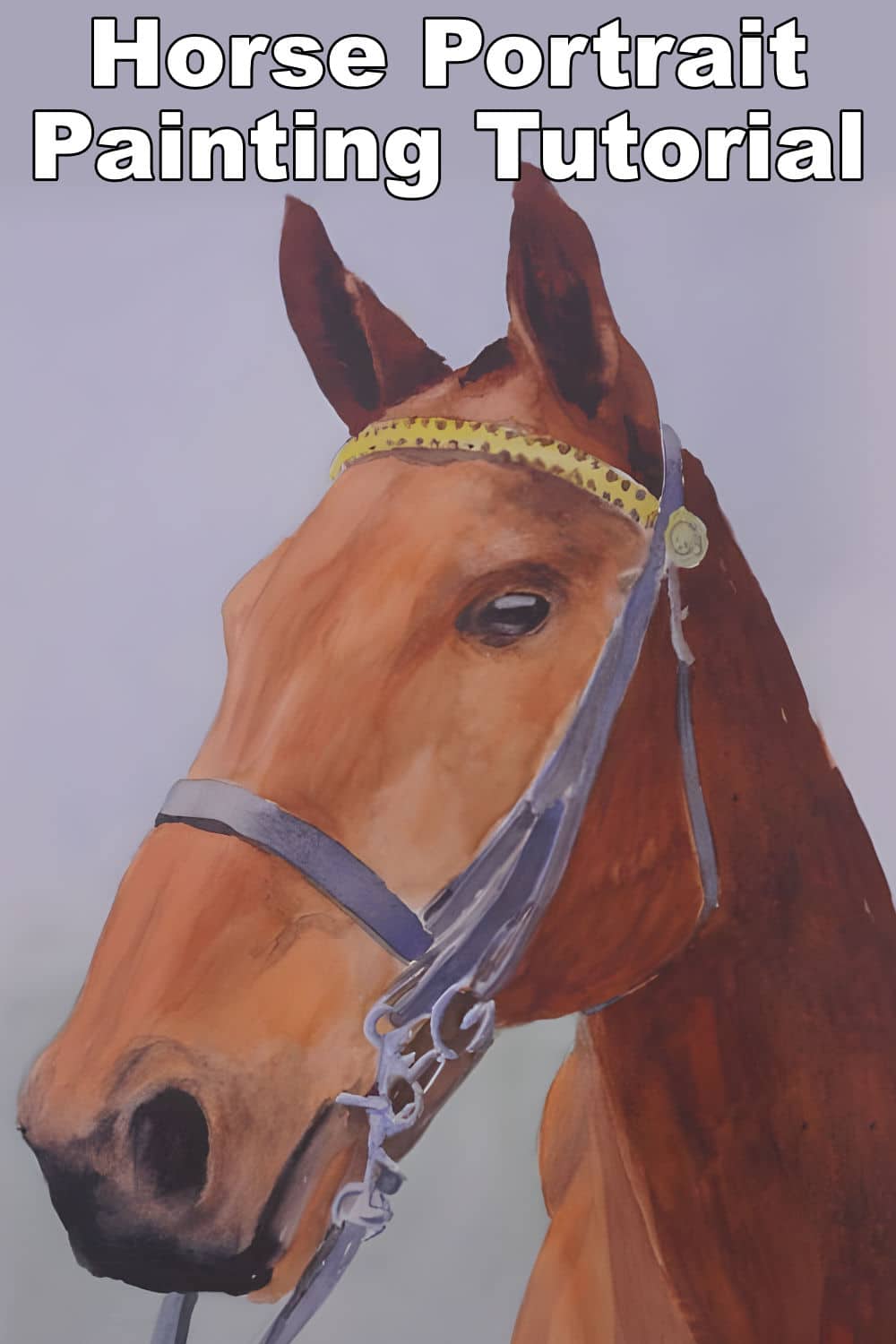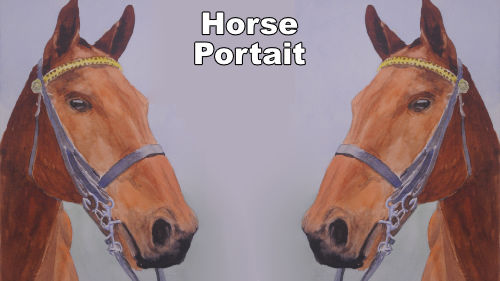Class Tutorial
Template

Transfer the design to the paper and darken up the bridle outlines which may disappear if you don’t the colour wash will erase any lines that are too light.
Add the masking fluid

Apply the masking fluid to all the areas where the white of the paper is to be preserved. Take particular care around the bit area. Don’t forget to mask in the eyelash area of the eye.
Painting the sky
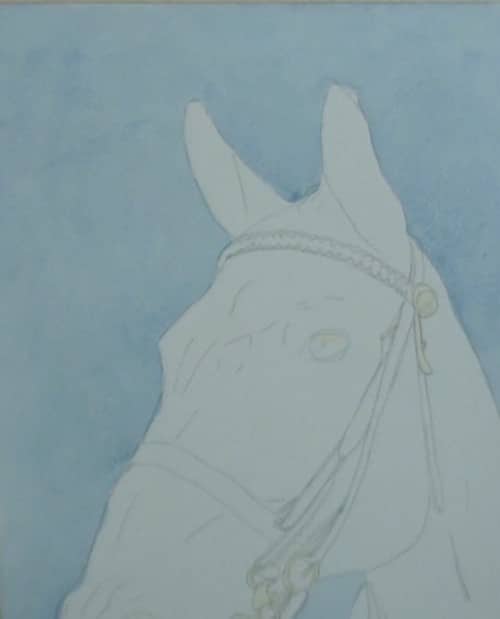
With a light blue colour wash in the sky, being careful around the profile of the horse. Look at the test colours on the outside of the painting area. It is always good to test your colours before applying them to the actual painting. A wrong colour or tone may be difficult to lift out if wrongly applied.

The out of focus background is added to give depth to the picture. This a light grey/green colour. It will be pulled forward if you paint it too bright a green.
Paint the ears and the forehead
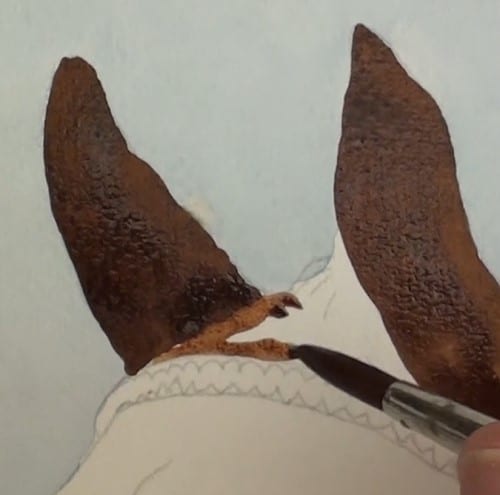
Block in the ears with a dark brown colour. Notice the three tonal ranges due to the lighting angles. We will come back later to lift out the details once the face has been blocked in.
The head and neck
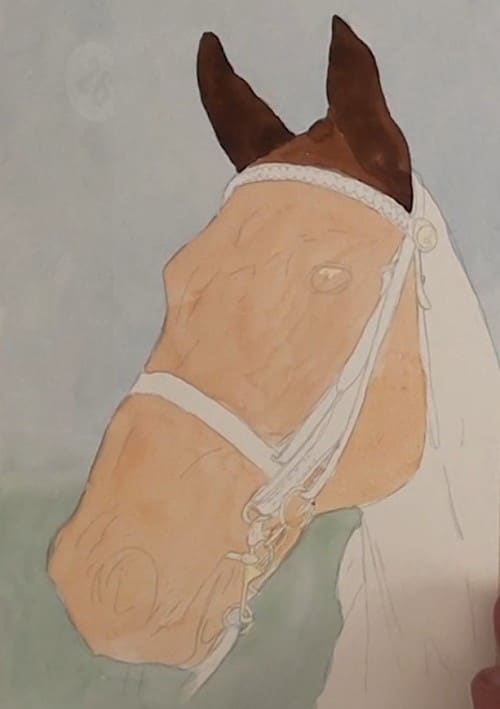
Block in the light highlight colour of the head. Dry the painting, and with a slightly darker tone lightly plot in the darker shades and the shadows. Starting with a lighter than the final colour will make it easier to fix any possible errors.
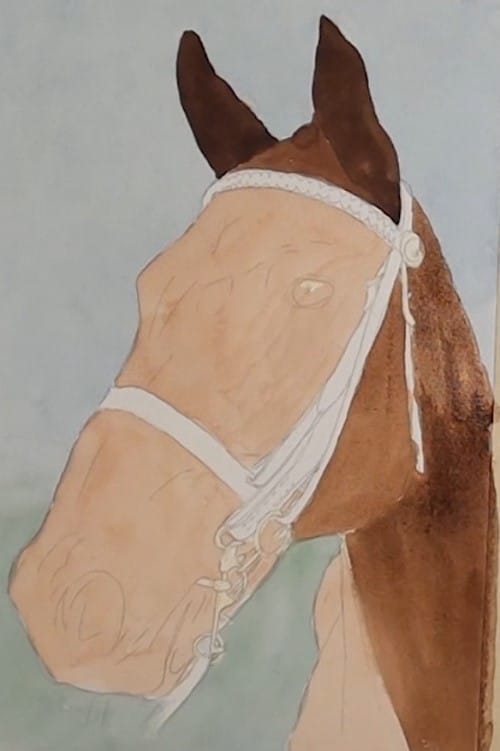
The neck is a much darker colour as this area is in the shade. Notice that the hindquarters have been left light. Add the dark shadow under the neck, as well as the few vertical streaks to indicate the neck muscles. The jaw area is slightly lighter due to the reflection off the ground.
Painting the eye
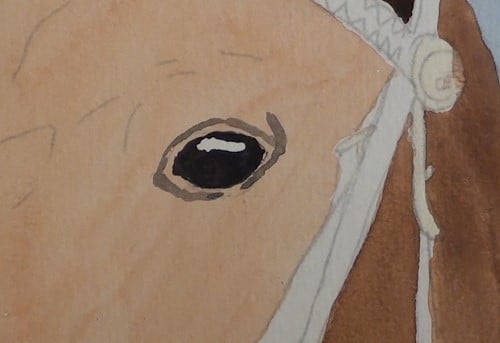
The eye area is a very dark mix. The white patch is where the masking fluid has been removed only after the area has been thoroughly dried. The paper will tear if the paper is still damp.
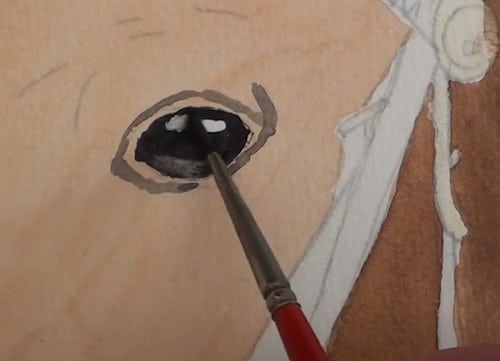
Lightly work some of the dark colour into the eyelash area and lift some colour out for the reflection at the lower end of the eye. Any details will be added in later on.
Painting the face

Begin to shade the moulding of the frontal area. Keep referring to the reference photograph when shading the front of the face. It is important to indicate the characteristics of the bone structure.

If you have covered the highlight by mistake, then lift it out with a “thirsty” brush.
The mouth and nostrils
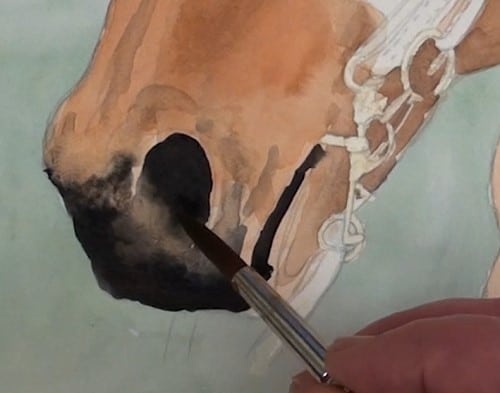
With the same dark colour as used in the eye, paint in the mouth and nose cavity. Carefully lift out some colour to indicate the lighter areas. At this stage the top edge of the nostril has a very sharp edge. With a damp brush, gently soften this edge to give it a rounded appearance.
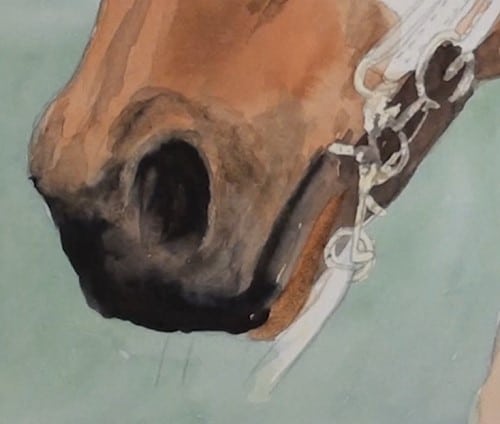
Add the shading under the chin area. Use a small round brush near the bridle.
Paint the bridle

Begin blocking in the bridle with a blue/grey mix. Notice the thin white area that has been left for highlight of the strap edge.

The top strap markings have been added
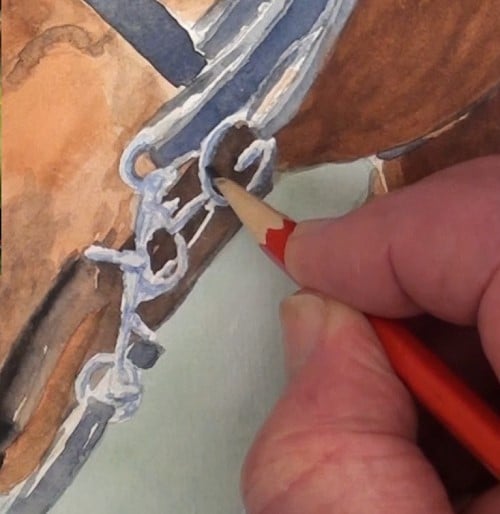
Use an HB pencil to sharpen up the shadow areas of the metal bits.
Paint the shoulder area
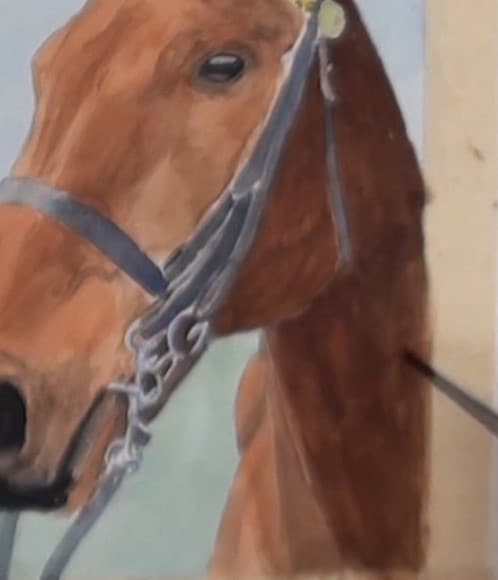
Carefully add the shading around the shoulder.
Glazing the face
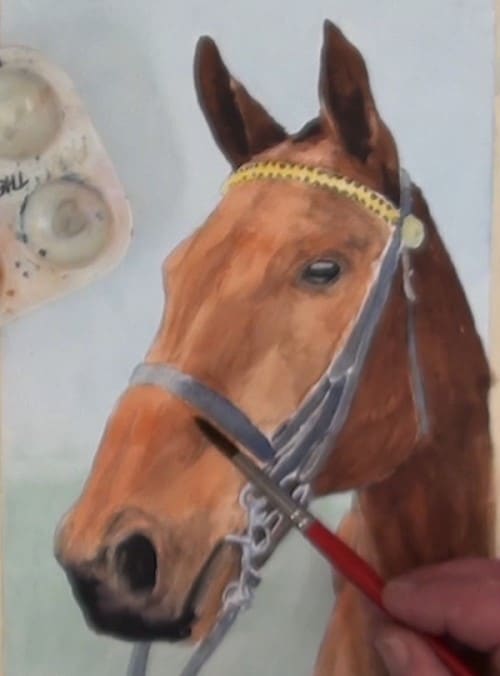
A warm glaze being applied over the head. This tends to unify the whole area. This must be applied very lightly over the completely dry painting. Don’t not do any scrubbing action.
Final painting

Click the button below to view the real time follow along version of this class:
Pin Me
